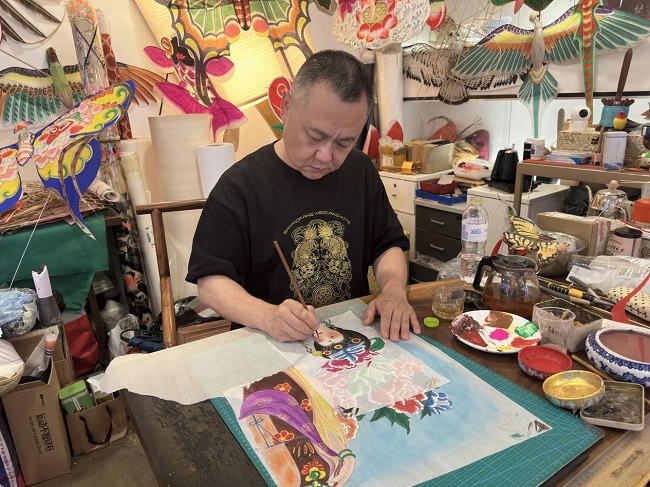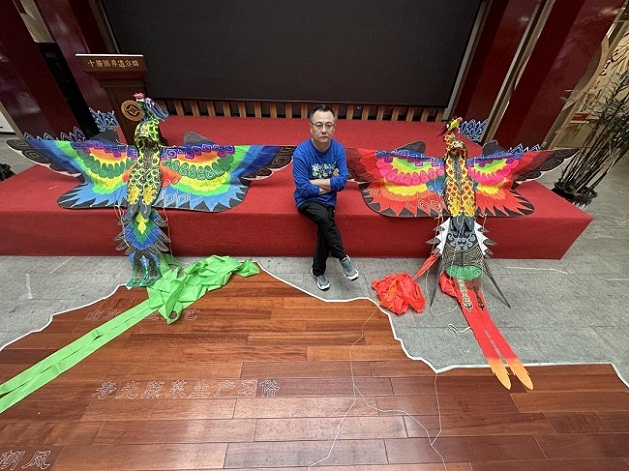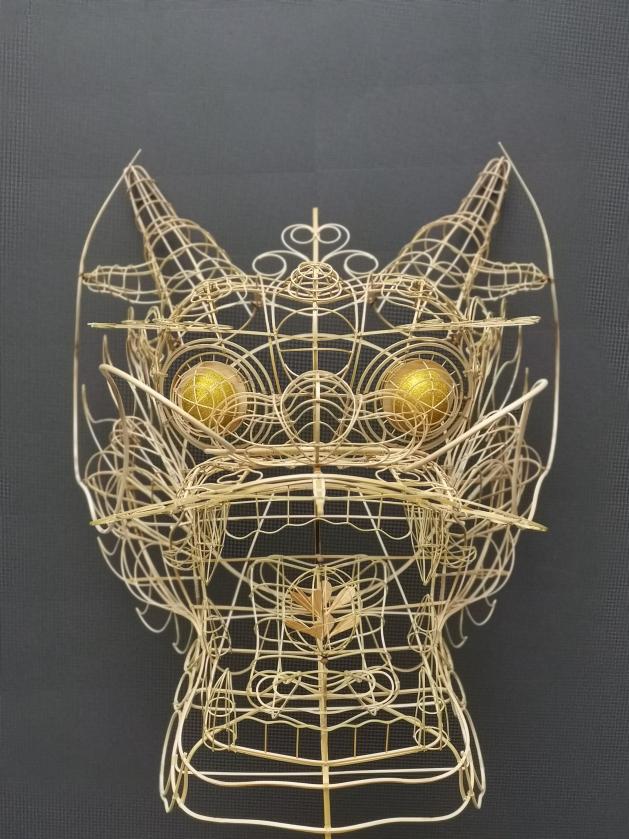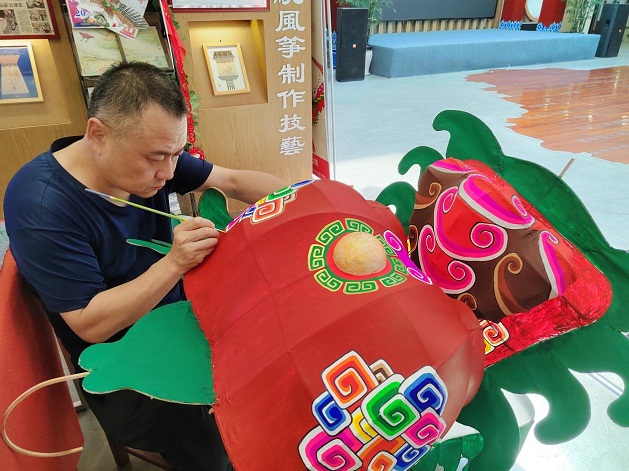China's intangible cultural heritage – Weifang kites

Liu Zhijiang paints a kite facet. [Photo by Ding Yanjun for chinadaily.com.cn]
Weifang in East China's Shandong province is reputed to be the world capital of kites and the development of kites in the city epitomizes the inheritance and innovation of traditional Chinese handicrafts.
"The making of Weifang kites culminated in the Ming and Qing dynasties (1368-1911)," said Liu Zhijiang, the fourth-generation inheritor of Weifang kites.
In the 1930s, Weifang had more than 30 kite stores which were frequented by business people from other cities, and in 1984 Weifang hosted the first international kite festival. This year marks its 40th edition.
Liu noted that Weifang kites highlight the characteristics of local woodblock paintings, clay figurines, and embroidery and their manufacture involves 10 procedures.
Take the dragon-head centipede kite for example. The dragon head is mixed with the designs of the tiger's head and lion's head and is made with more than 150 bamboo strips and about 500 buckles. (Edited by Gong Jun)

Liu Zhijiang poses for a picture with his two kites. [Photo by Ding Yanjun for chinadaily.com.cn]

A dragon head skeleton of a dragon-head centipede kite. [Photo by Ding Yanjun for chinadaily.com.cn]

Liu Zhijiang paints a kite facet. [Photo by Ding Yanjun for chinadaily.com.cn]








